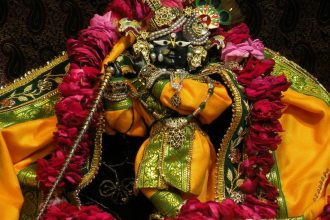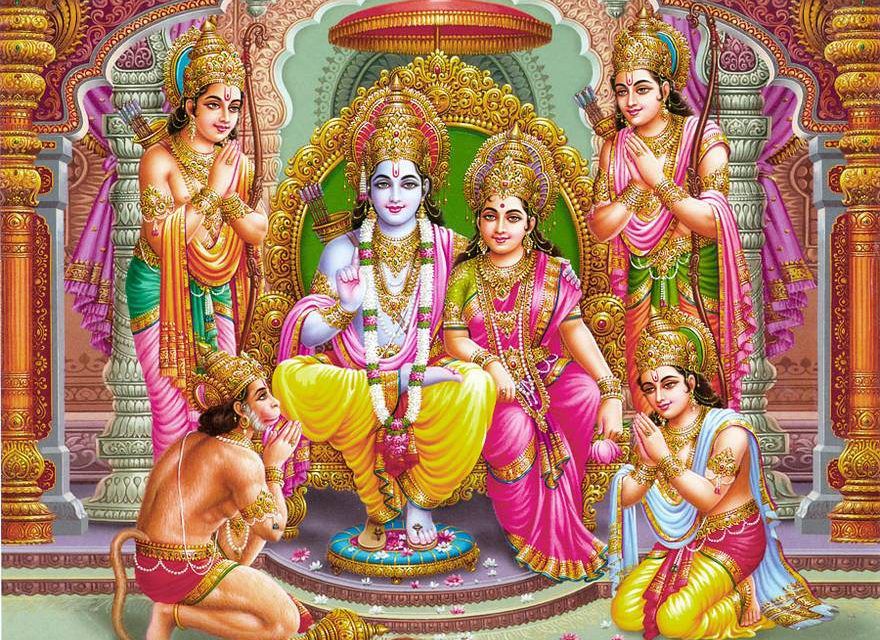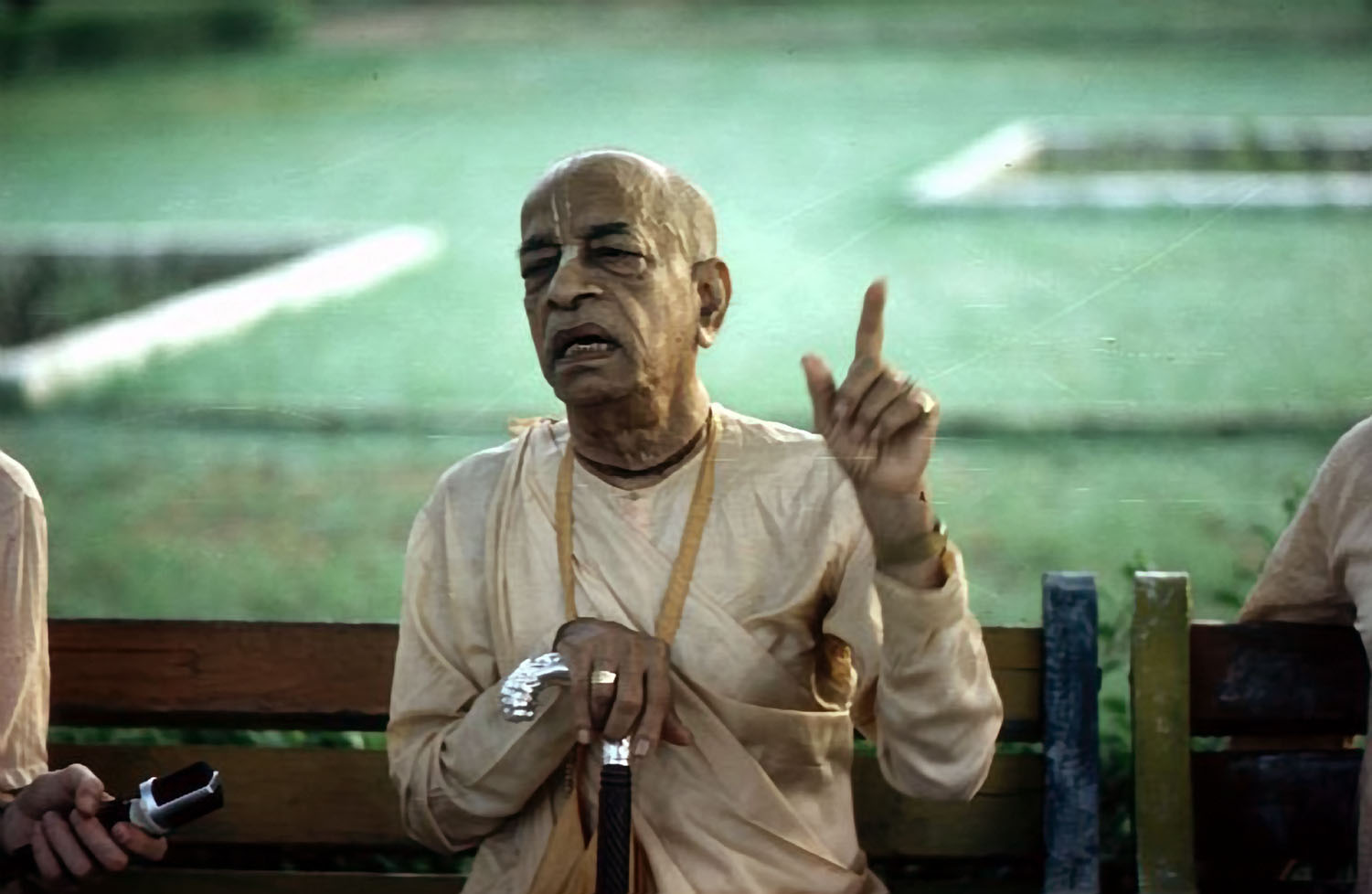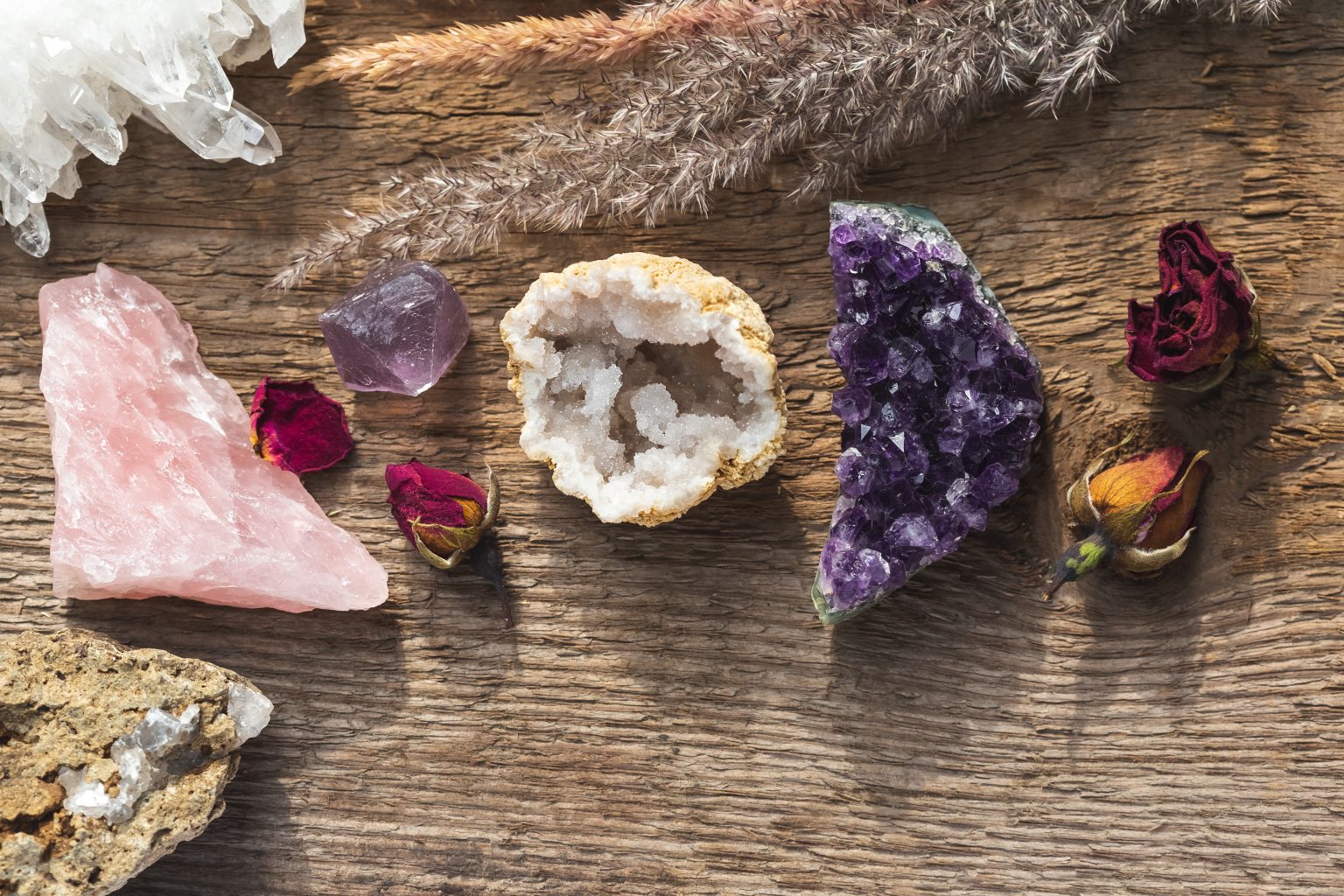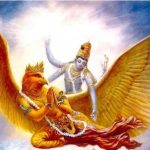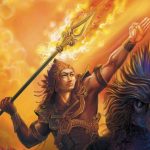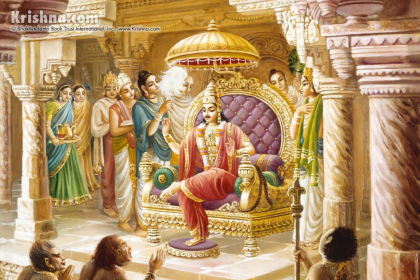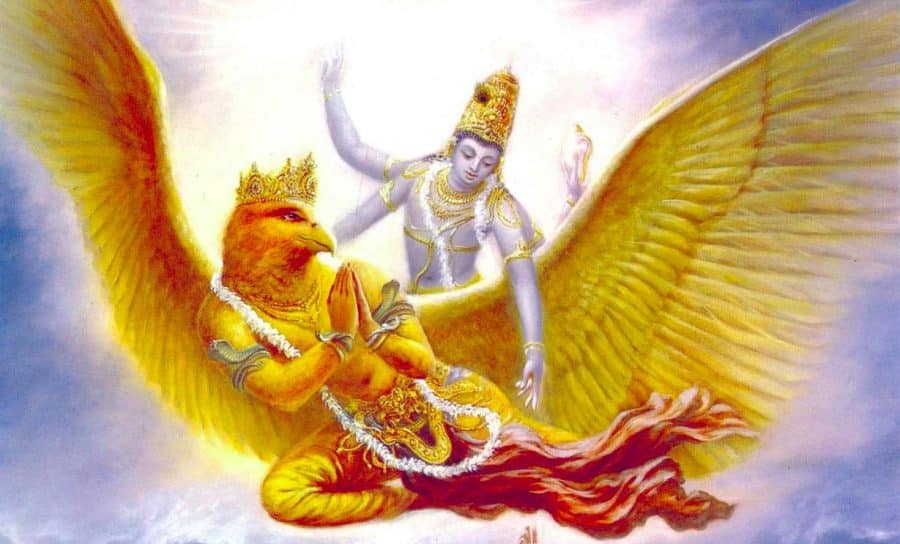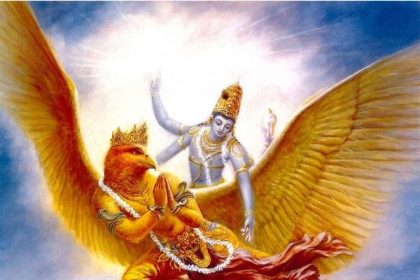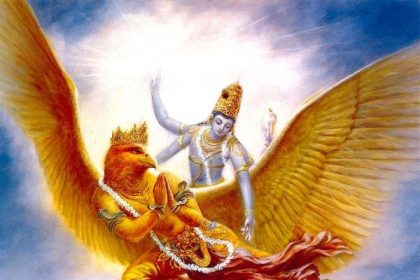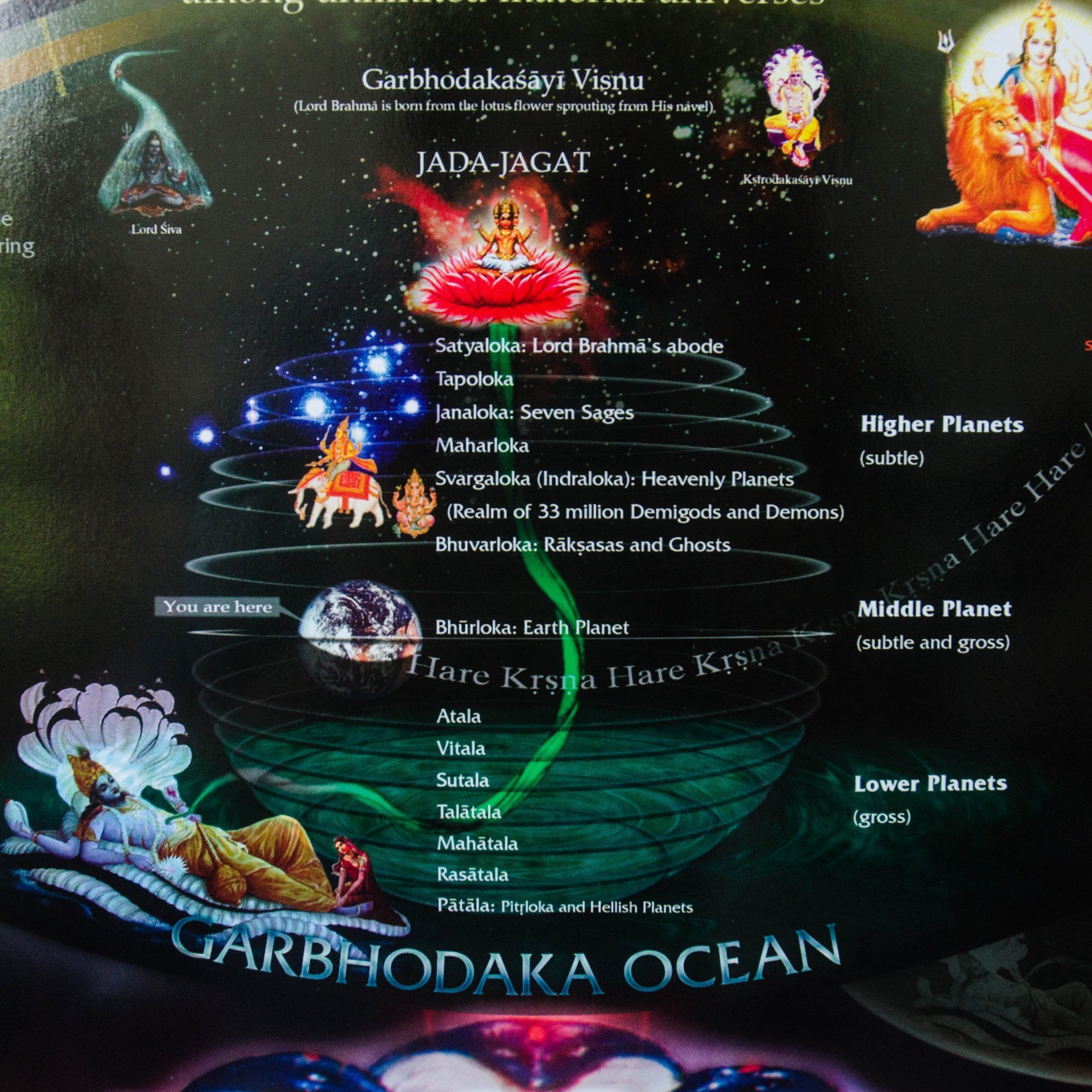After a treatise on astrology, the Garuda Purana next discusses the testing of gems. First, the following story is told to explain the origin of valuable gems:
There was a demon named Bala who conquered Indra and the demigods. Indeed, this demon was so formidable that the demigods had no hope of gaining revenge by means of prowess. It so happened, however, that on the pretext of begging for a benediction, the demigods requested Bala to become their sacrificial animal. When Bala was tied to the sacrificial stake, his various limbs became the seeds of gems.
A great struggle then took place between the demigods and demons for possession of the seeds of the gems. As they coursed through the sky in their chariots, the seeds fell here and there, in the oceans and rivers, on the mountains, and in the jungles. Wherever they fell, there came to be mines of gems. Some of these gems had various powers for counteracting the influence of poison, illness, serpents, and demons, and some of the gems were powerless.
These were the different kinds of gems created—vajra (diamond) , mukta (pearl), mani, padmaraja (ruby) , marakata (emerald) , indranila (sapphire) , vaidurya (lapis lazuli) , pushparaja (topaz) , karketana, pulaka, rudhira (blood red stone) , sphatika (crystal) , and vidruma (coral) .
Those who are knowers of gems have classified them in this way. One who is expert in studying gems first looks at their shape and colour. Then, he looks for any defects, and then ascertains the gem’s influence. After such a study, a price is fixed.
About pearls it is said that they are found in lordly elephants, clouds, wild boars, shell, fish, cobras, oysters, and bamboo. Only the pearls found in oysters are considered to be valuable gems.
It is said that the teeth of the great demon, Bala, fell into the ocean and found a place within oysters. While the Sun-God was taking the blood of Bala through the sky, he was suddenly confronted by Ravana, the king of the Rakshasas. At that time, the Sun-God dropped the blood of the demon into a river which thereafter became known as the Ravana-Ganga. Rubies are found on the banks of that river.
As Vasuki was taking away the demon Bala’s bile through the sky, he was attacked by Garuda. Because of this, Vasuki dropped the bile on the Manikya mountain. After the fall, the bile crossed the mountain and reached the ocean, where it was transformed into emeralds. Garuda caught some of the bile and, as he was falling unconscious, he released it through his nostrils. This also produced emeralds.
The eyes of the demon Bala, when they fell to the earth, were transformed into sapphires.
The vaidurya stone was produced from the loud shouts of the demon, Bala.
Particles of his skin fell on the Himalayas, producing the topaz.
The windgod gathered the nails of the demon and scattered them amidst lotus flowers, producing a gem called karketana, which is not visible at present.
The semen of the demon fell in the northern region of the Himalayas, producing gems called bhishma , which are white.
Serpents scattered the demon’s claws in a mountainous region, producing the pulaka gem.
The fire-God carried the facial features of the demon and deposited them in the Narmada River, creating blood stones.
Balarama scattered the fat of the demon over the Vindhya mountains and elsewhere in modern-day China and Nepal, making crystal.
Shesha carried the intestines of the demon and deposited them in modern-day Kerala and other places, producing coral.


